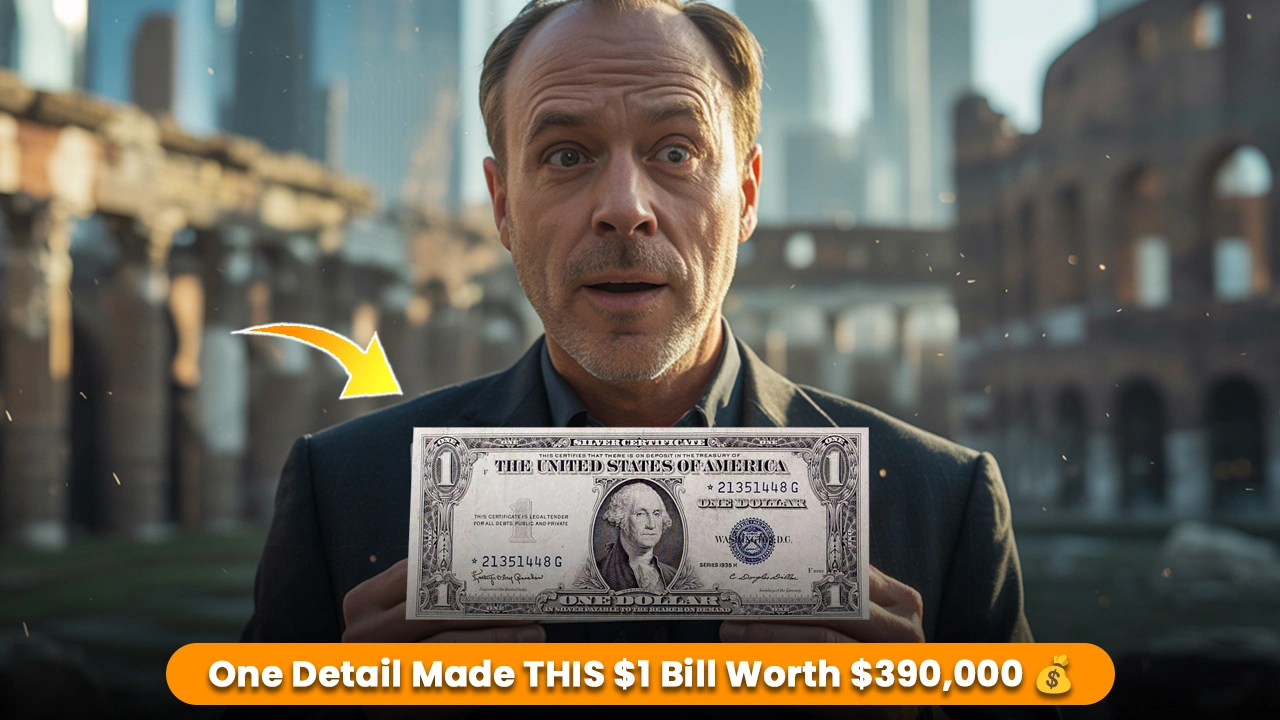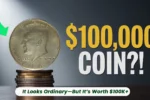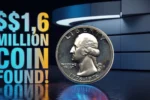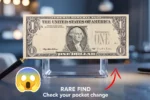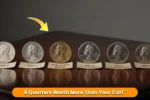A 1935 $1 Silver Certificate Found in Pocket Change Turns Out to Be Worth $390,000: In an age where digital payments and cryptocurrency dominate the conversation about money, a surprising story has captured the attention of collectors and the general public alike. A seemingly ordinary $1 silver certificate from 1935, found casually in someone’s pocket change, turned out to be an incredibly rare and valuable item — worth a staggering $390,000 at auction.
This unexpected discovery highlights the hidden treasures that may still be circulating in the most unlikely places, reminding us that history can sometimes be hiding in plain sight.
The Discovery
The remarkable story began when a man in California — whose name remains undisclosed for privacy reasons — received change after purchasing coffee at a local diner. Among the bills was a worn-looking dollar note that stood out due to its bluish seal and slightly different design.
Intrigued, the man took a closer look and noticed the date: 1935. Knowing that silver certificates were once backed by real silver held by the U.S. Treasury, he decided to do a little research. What he discovered shocked him: some variations of the 1935 silver certificate could be extremely valuable, depending on their series, serial numbers, and printing errors.
He decided to get the note authenticated and appraised by a professional currency grader — and that’s when the real surprise unfolded.
What Made It Worth $390,000?
The note wasn’t just any 1935 $1 silver certificate. It belonged to the 1935A series and featured an ultra-rare “R” and “S” experimental overprint. During World War II, the U.S. Bureau of Engraving and Printing tested different paper types using these overprints to determine durability under extreme conditions.
Most of these experimental notes were destroyed or never circulated widely. Finding one in reasonably good condition — especially outside of a collector’s hands — is nearly impossible.
Here are the key features that made this note worth $390,000:
| Feature | Description |
|---|---|
| Series | 1935A |
| Type | Silver Certificate |
| Overprint Mark | “R” experimental overprint (for paper testing) |
| Condition | Extremely Fine (graded EF-45) |
| Rarity | Fewer than 500 known to exist |
| Serial Number Range | Within rare subset of experimental prints |
The unique overprint combined with its condition and rarity created a perfect storm of value. When the note went to auction at a numismatic event in Florida, bidding was fierce, and it eventually sold for $390,000 to a private collector.
Understanding Silver Certificates
Silver certificates were a form of paper currency issued by the U.S. government between 1878 and 1964. They were once redeemable for an equivalent amount of silver coin or bullion. The 1935 series is among the most commonly found today in collections and occasionally even in circulation.
However, only specific versions or conditions — like the 1935A “R” and “S” experimental notes — carry extraordinary value. Most 1935 silver certificates are worth between $1.25 to $5 depending on condition, while rare varieties can command prices in the tens of thousands — or, in this case, hundreds of thousands.
Lessons for Everyday People
This incredible story has inspired coin and currency enthusiasts to take a closer look at their wallets and coin jars. While the odds of finding a note like this are slim, it’s not impossible.
Here are a few tips for spotting potentially valuable old currency:
-
Check the Series Date: Anything pre-1964 could have value.
-
Look for Odd Markings: Experimental stamps, unusual serial numbers, or printing errors often signal rarity.
-
Examine the Seal Color: Silver certificates typically have blue seals; red or brown seals may indicate legal tender notes, also collectible.
-
Inspect the Condition: Crisp, uncreased notes are always more valuable.
-
Get a Professional Opinion: If you find something unusual, consider contacting a reputable currency dealer or grading service.
Final Thought
In a world where spare change is often ignored or thrown in a jar, this story is a reminder that not everything old is worthless. That 1935 silver certificate — nearly discarded or spent without a second thought — turned out to be a nearly half-million-dollar treasure.
It’s not just about luck; it’s about awareness. Next time you receive change, take a moment to look at it. You might just be holding a piece of history — and maybe, a fortune.
Quick FAQ: 1935 $1 Silver Certificate
Q: What is a silver certificate?
A: A silver certificate is a form of U.S. paper currency once redeemable for an equivalent amount of silver. They were issued between 1878 and 1964.
Q: How do I know if my 1935 silver certificate is valuable?
A: Look for rare features like experimental overprints (“R” or “S”), unusual serial numbers, or misprints. Condition is also critical.
Q: Are all 1935 $1 silver certificates worth a lot?
A: No. Most are worth only slightly more than face value unless they have rare attributes.
Q: Where can I sell or get my note appraised?
A: You can approach a certified currency dealer, attend a numismatic event, or submit it to services like PCGS or PMG for grading.
Q: Can I still use silver certificates as money?
A: Yes, they are still considered legal tender at face value, but they are usually worth more to collectors.
